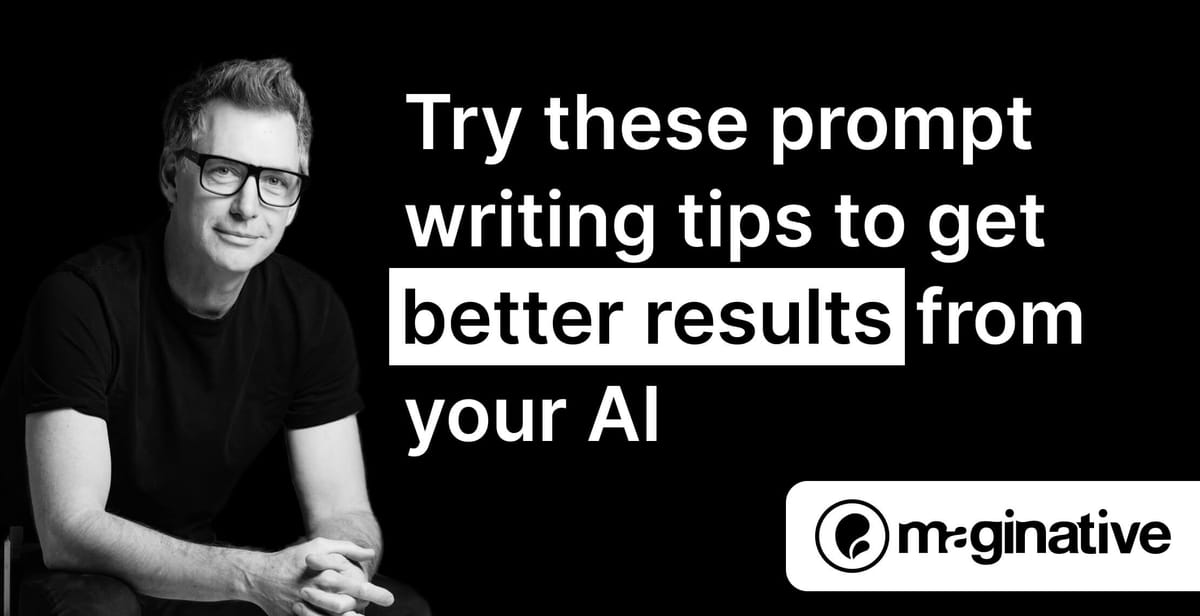
AI is sometimes sold as a replacement solution for tasks. I don't think that's helpful to how we adopt or use the available AI tools. Rather than thinking of LLM's as an alternative to my work, I treat AI as a partner, not a replacement.
Here are some of the ways I've created a partner out of AI, and some example prompts you can try:
1. Adopt a Collaborative Mindset
Instead of expecting the AI to just give you the answer, approach it as you would a talented colleague. Frame your prompts as if you're talking to an objective co-worker.
Try this: "I'd like your help with a problem I'm working on. Can you be my thought partner and help me avoid blindspots or biases?"
2. Focus on Problem Understanding
Rather than asking AI to solve problems outright, use it as a thinking assistant to explore the problem space.
Example prompt: "Let's start by understanding the problem. What questions should we be asking to fully grasp the situation?"
3. Provide Context
The more context you provide, the better your responses will be. Think of it as briefing a new team member. What important things should the AI know before it responds.
Try this: "Here's the background: [Insert detailed context]. Given this information, what perspectives should we consider?"
4. Upload Relevant Documentation
Similarly, you should give the AI access to any documentation and data that will help it to tailor responses to your specific use-case.
Pro-tip: Use Claude Projects or CustomGPTs to ground your AI with specific documents and custom instructions. Once created, you can share these with your team to standardize operations.
Example: "I'm sharing our product roadmap and user feedback. Based on this data, what potential features should we prioritize?"
5. Have a Conversation
Don't stop at the first response. Ask follow-up questions and provide additional context to refine ideas.
Prompt: "That's an interesting point. Can you elaborate on how it addresses our core user needs?"
6. Use Mental Models
Use established thinking frameworks to generate new ideas or solutions. This can lead to more structured, creative, and thorough responses, often uncovering insights that might be missed with more straightforward questioning.
Try this: "Let's use the 'First Principles Thinking' approach to tackle this problem. Can you break down the issue into its fundamental truths and rebuild a solution from there?"
7. Break Down Complex Tasks
For complex work, try dividing the work into separate exercises, or better yet, have the AI break it down for you by explain the steps it will take to accomplish the task. For example, a product launch might include market research, product development, marketing strategy, and launch logistics.
Example prompt: "Let's break down this product launch into its key phases. Can you outline the main stages we should consider?"
8. Role-Play with AI
Assign different roles to the AI for various aspects of the project. This can provide diverse perspectives and more specialized insights.
Example prompt: "Now, acting as a seasoned product manager, what potential roadblocks should we anticipate in the development phase?"
9. Sequential Problem-Solving
Have your AI think in steps and work through each tasks methodically. For larger tasks, this will help to ensure the response is comprehensive.
Example prompt: "Let's work through these market research findings one by one. For each trend, explain its potential impact on our product and suggest how we might address it."
10. Iterative Refinement
Use the knowledge/insights gained from each response to inform and refine subsequent prompts.
Example prompt: "Based on this marketing strategy we've developed, how might we need to adjust our launch logistics to better align with our target audience?"
Remember, the goal isn't to replace human creativity and critical thinking, but to enhance it. These prompt writing tips are designed to help you leverage AI as a powerful collaborator and amplify YOUR abilities.
As AI models continue to evolve, we'll likely see more intuitive interfaces and AI agents capable of proactive, independent action. However, the fundamental principle of human-AI collaboration will remain crucial. Use these tips to start building a solid foundation for effective partnership, that will allow you to adapt and thrive as AI technology advances.

